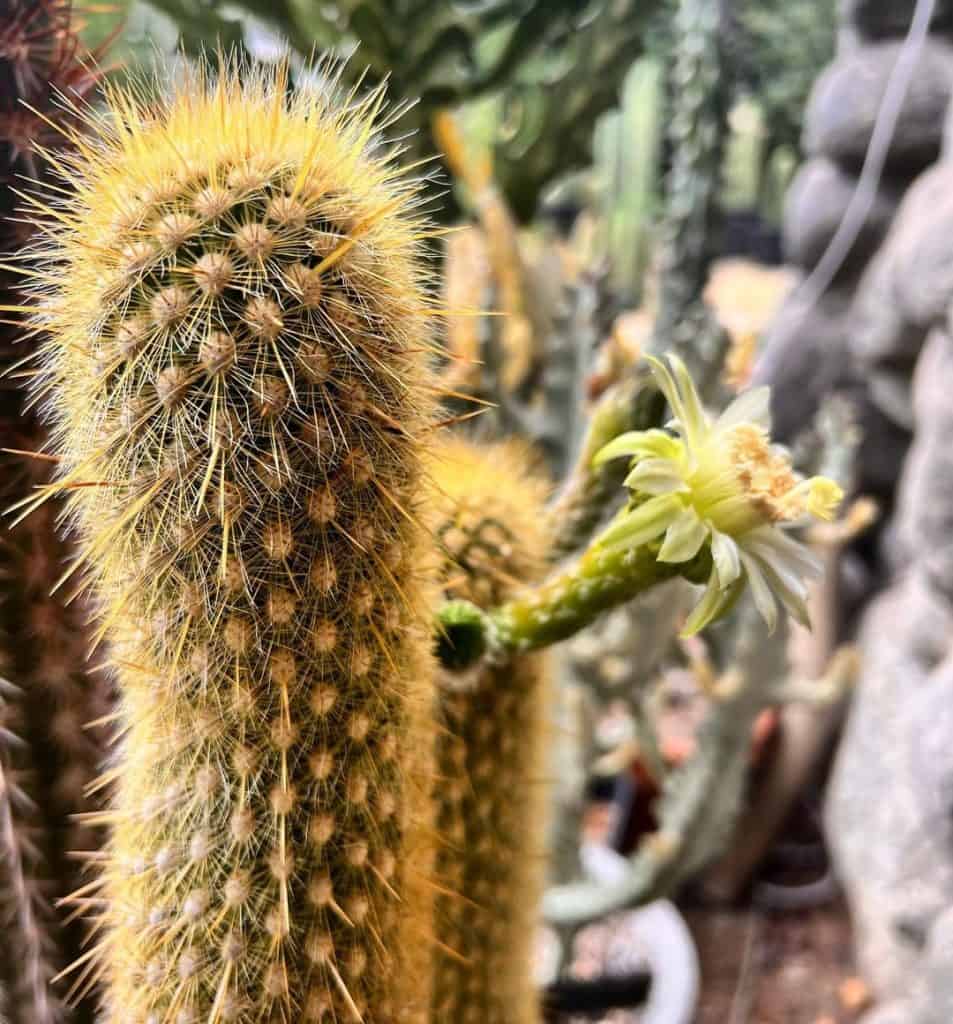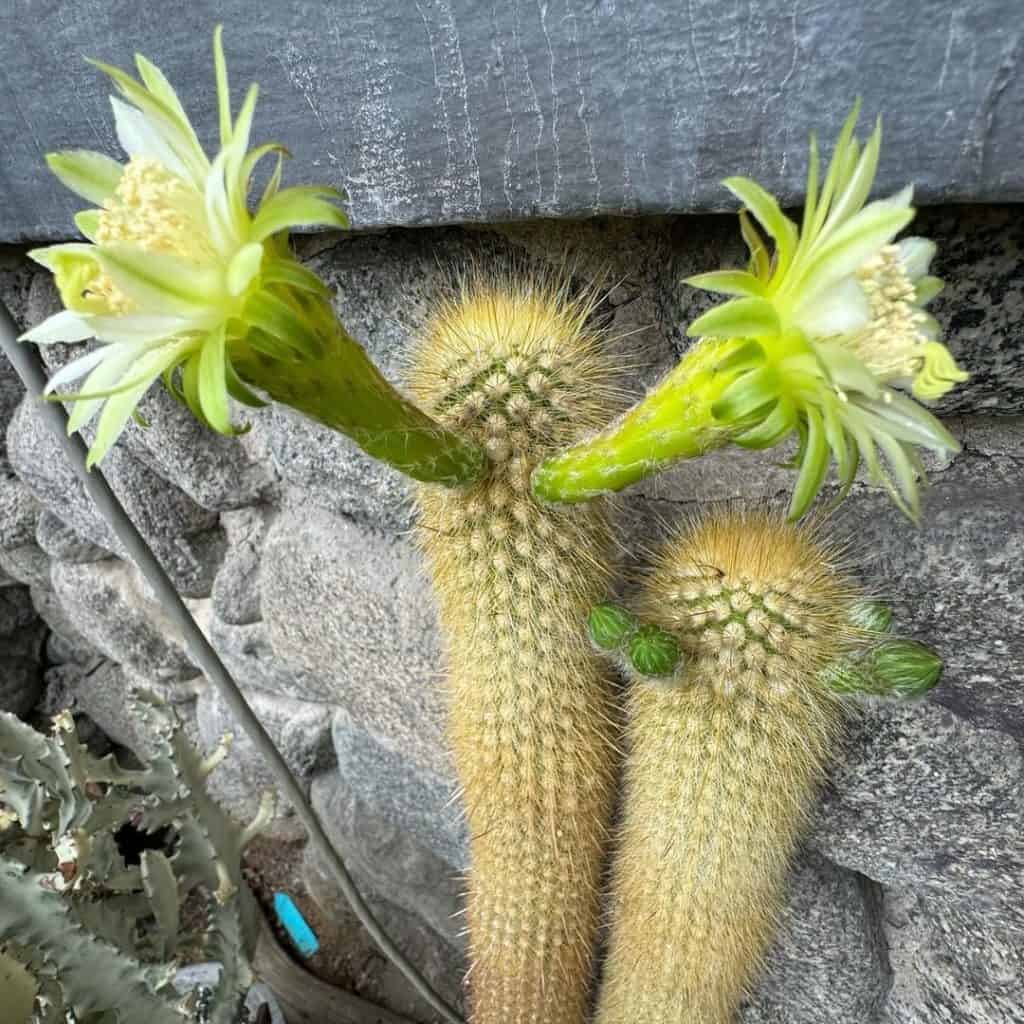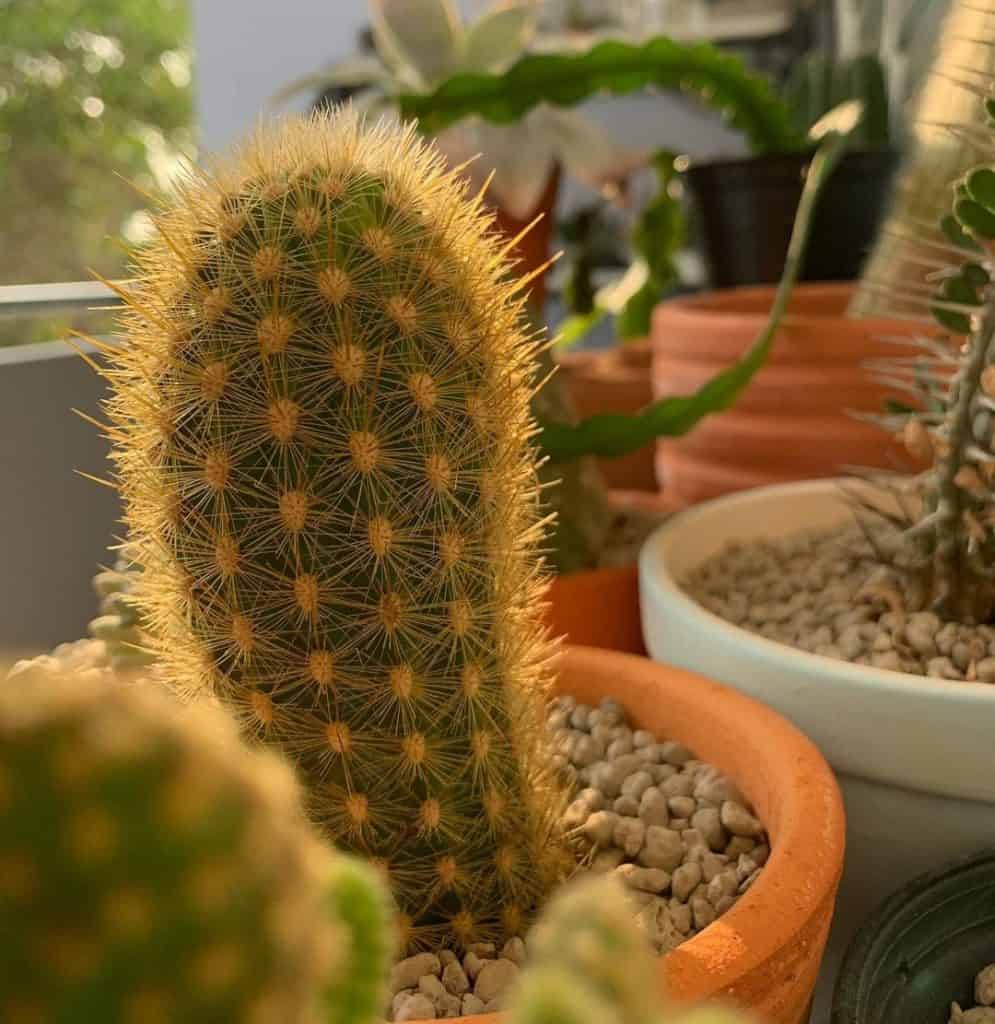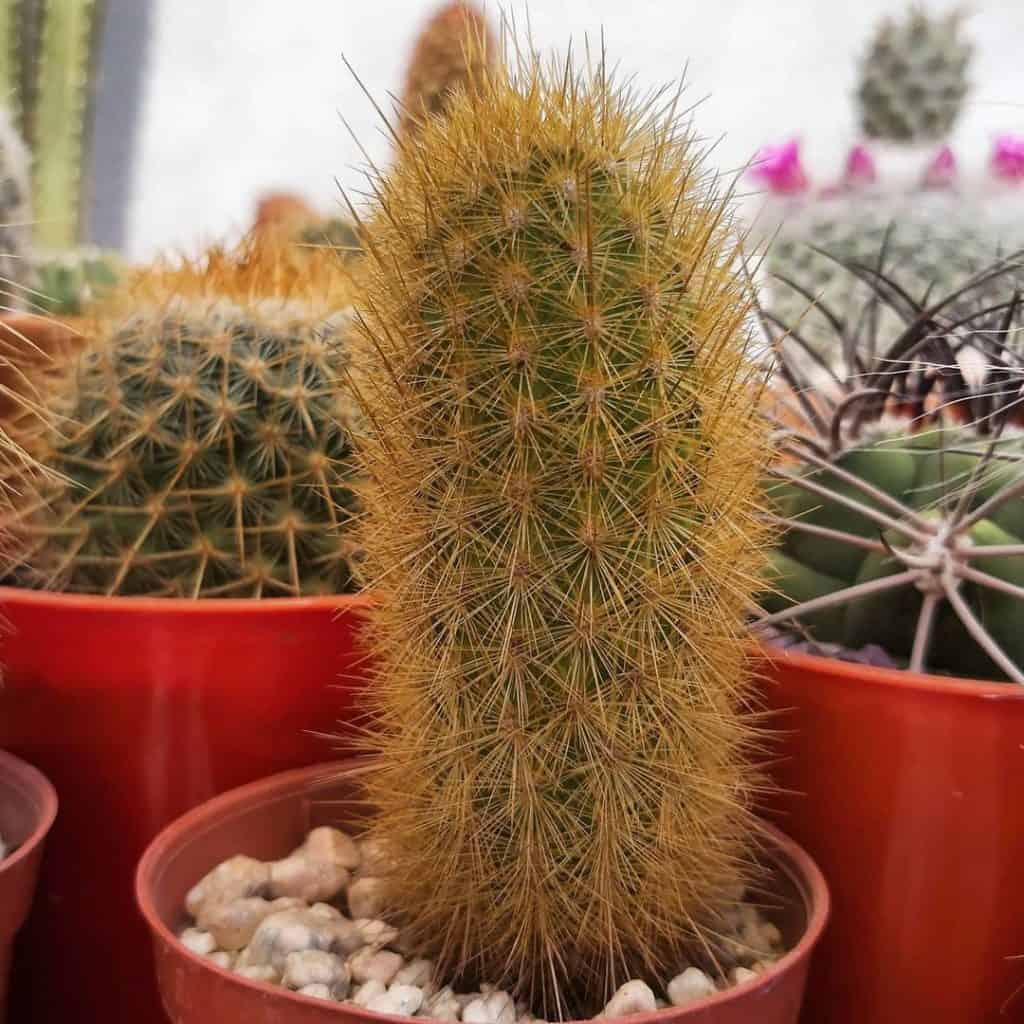Haageocereus versicolor: Characteristics and Care
Meet the unassuming yet charming Haageocereus versicolor, a humble cactus native to the sun-drenched regions of Peru. While it may not be the showiest plant in the desert, this understated beauty has a certain captivating allure that’s worth exploring. With its simple cylindrical stems adorned with delicate spines and modest white or cream blooms, the Haageocereus versicolor invites you to appreciate the subtle elegance of nature’s creations. So, let’s dive into the world of this Peruvian cactus and uncover the secrets that make it a delightful addition to any collection.

Contents
About Haageocereus versicolor
Native to the Peruvian regions of Lambayeque, Piura, and Tumbes, the Haageocereus versicolor (formerly known as Cereus versicolor) is a cactus with a straightforward yet endearing appearance. It features a cylindrical central stem that branches out into smaller stems, each covered in light green skin and several ribs adorned with sharp golden, white, and yellow spines.
While not the most flamboyant of cacti, the Haageocereus versicolor has a certain understated charm. Its true beauty lies in the simplicity of its form and the delicate blooms that grace the stem tips. These flowers, typically white or creamy in color, measure up to 4 inches wide and add a touch of elegance to the otherwise unassuming plant.

Related Post:
11 Cereus Cactus Types With Pictures
How To Care For Haageocereus versicolor
Light Requirements
Like most cacti, Haageocereus versicolor thrives in direct, bright sunlight. The more intense the sunlight, the happier this beauty will be! If you’re growing it indoors, consider using a high-quality grow light to mimic the sun’s rays and ensure your cactus receives the light it craves.
Watering Needs
When it comes to watering, moderation is key. These cacti prefer a good, thorough soaking followed by a period of drying out. During the warmer months, water only when the soil is completely dry, and in the cooler seasons, reduce watering to an occasional splash. Overwatering can be detrimental, so be sure to let the soil dry out between waterings.
Soil Preferences
To keep your Haageocereus versicolor happy and healthy, choose a well-draining soil mix. A blend of potting soil, coarse sand or perlite, and a touch of compost will provide the perfect environment for your cactus to thrive. The right soil mix will ensure proper drainage and prevent waterlogging, which can be disastrous for these desert beauties.

Fertilizing Tips
Like most plants, Haageocereus versicolor appreciates a little boost of nutrients. During the growing season (spring and summer), feed your cactus with a balanced cactus or succulent fertilizer every two to four weeks. Dilute the fertilizer to half-strength, and avoid over-fertilizing, as too many nutrients can harm your plant.
Temperature and Humidity
These Peruvian cacti are hardy and can tolerate a wide range of temperatures, from cool to warm. During the dormant winter months, they prefer cooler temperatures around 50°F (10°C) but can handle temperatures as low as 32°F (0°C). As for humidity, they thrive in dry, arid conditions, so avoid excessive moisture in the air.
Pests and Problems
While generally resilient, Haageocereus versicolor can occasionally fall victim to pests like mealybugs and spider mites. Keep an eye out for cottony masses or webbing, and take action immediately by using an insecticidal soap or neem oil. Additionally, be cautious of fungal infections, which can be prevented by ensuring proper drainage and avoiding over-watering.
Pruning Pointers
Like most cacti, Haageocereus versicolor doesn’t require frequent pruning. However, if you notice any damaged or discolored stems, feel free to trim them off using sterilized pruning shears. This will not only improve the plant’s appearance but also encourage new growth.

Potting and Repotting
As your Haageocereus versicolor grows, it may outgrow its current pot. To keep it happy and healthy, repot it annually in early spring, using a slightly larger container and fresh, well-draining cactus soil. Be gentle with the roots during this process to avoid damaging them.
Haageocereus versicolor Propagation Methods
One of the most exciting aspects of growing Haageocereus versicolor is the opportunity to propagate and expand your collection. This cactus offers two straightforward methods for propagation, ensuring that you can enjoy its beauty for years to come.
From Stem Cuttings:
- Take a healthy stem cutting from an established Haageocereus versicolor plant, ensuring it has a few areoles (the spots where spines emerge).
- Allow the cut surface to callous over for a few days by letting it dry out completely. This helps prevent rotting.
- Once calloused, plant the cutting about an inch deep in a well-draining pot filled with a cactus/succulent soil mix.
- Water sparingly, just enough to keep the soil slightly moist, and place the pot in a warm, bright location.
- With patience and care, you’ll soon see new growth emerging from the cutting.
From Seed:
- If you’re feeling adventurous, you can also propagate Haageocereus versicolor from seed. Start by allowing the fruit to ripen fully on the plant until it’s significantly overripe.
- Harvest the unblemished fruit and clean the seeds, removing any pulp or debris.
- Once the seeds are dry, you can directly sow them in a well-draining cactus/succulent mix after the last frost has passed.
- Keep the soil moist but not waterlogged, and provide bright, indirect light until the seedlings emerge.
